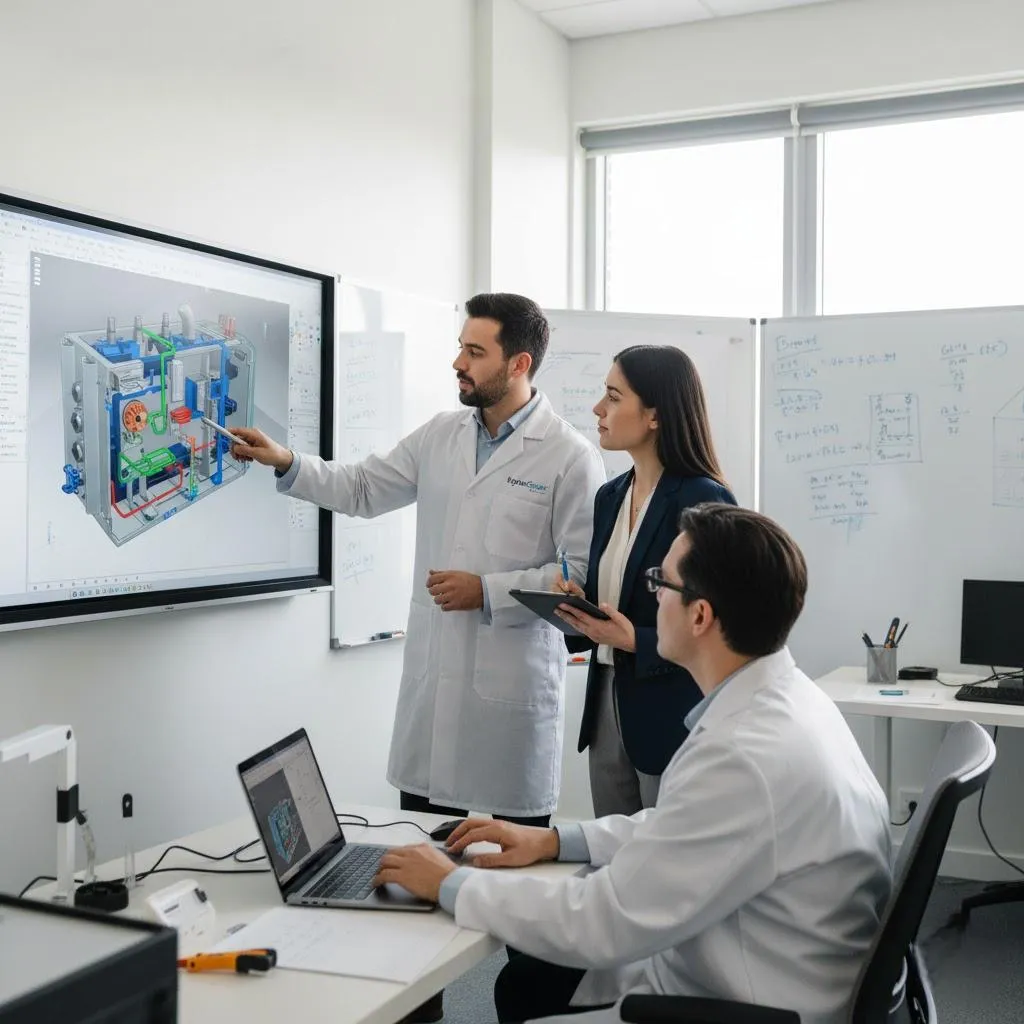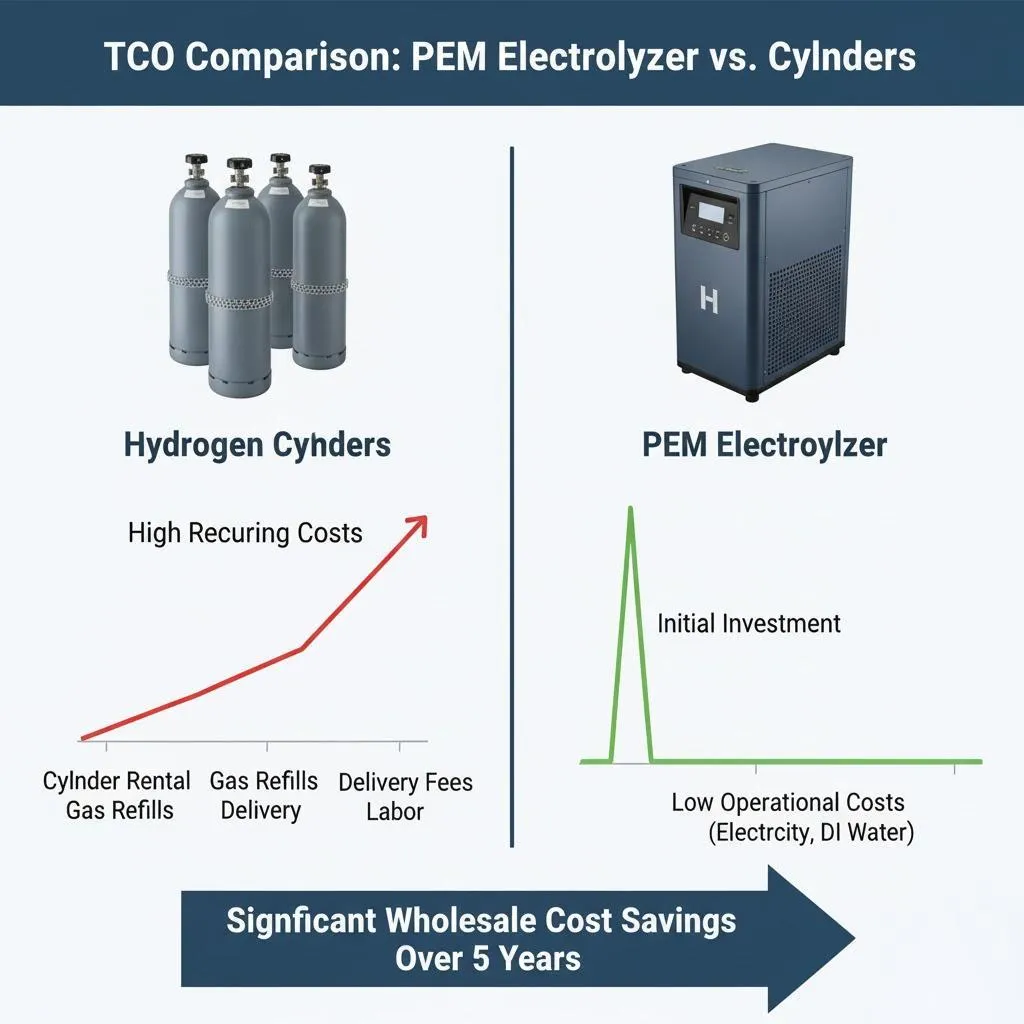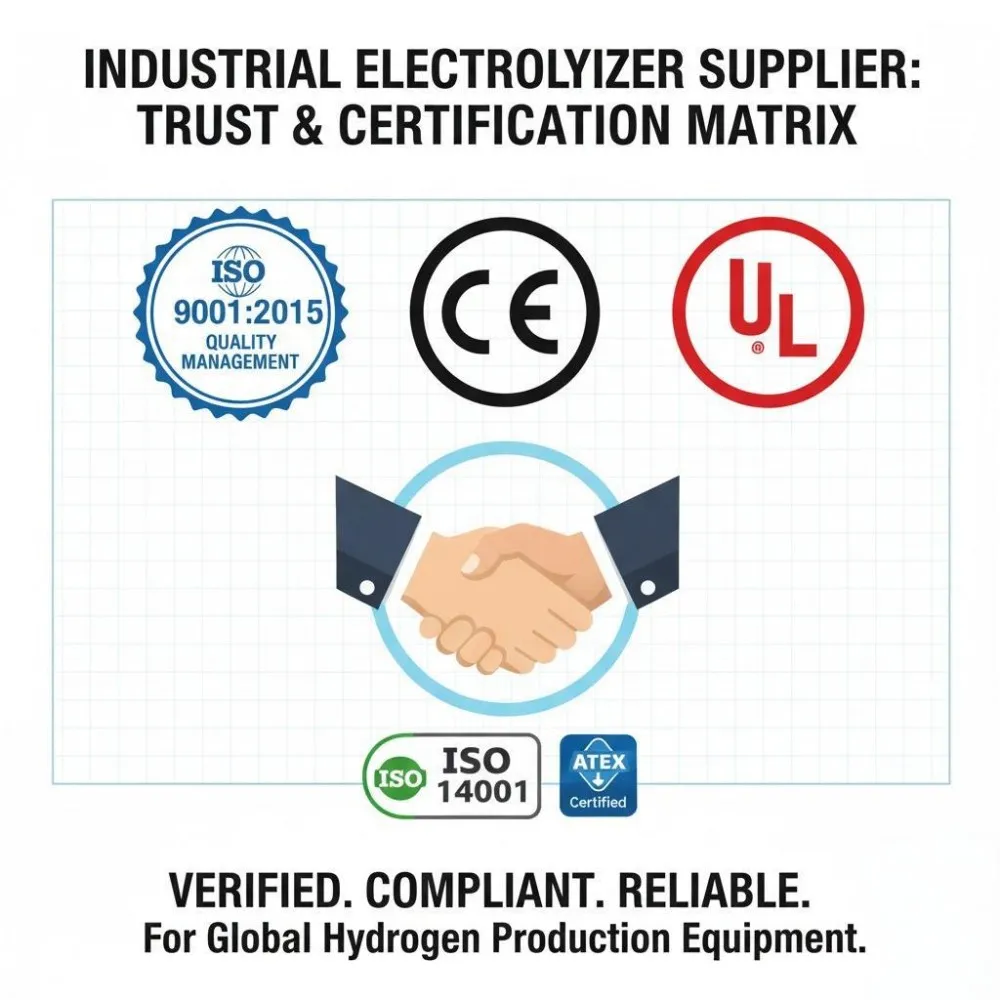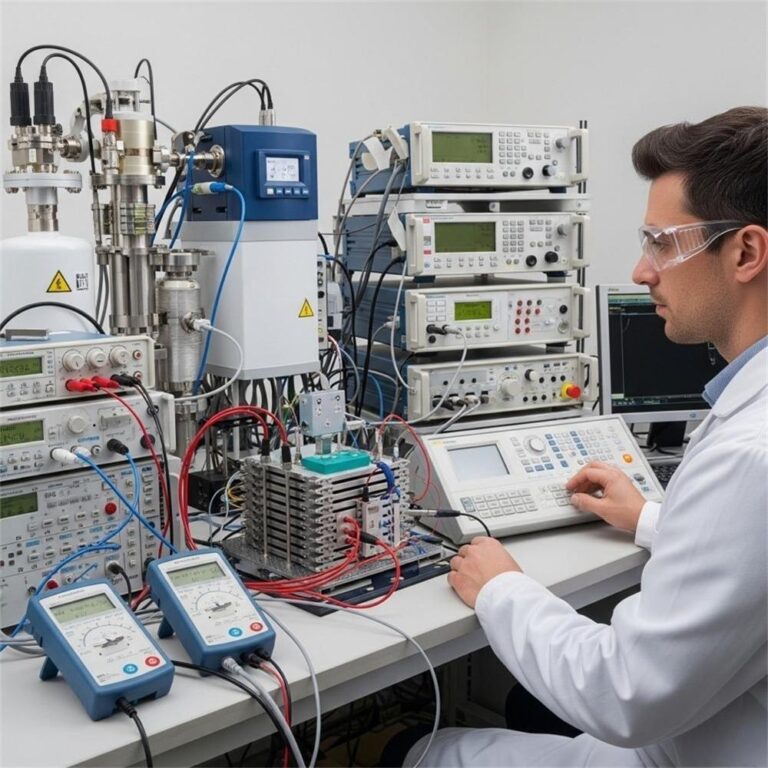I. Introduction
Hydrogen generators are pivotal in the transition towards sustainable energy solutions. Among them, 30Nm3/H alkaline water hydrogen generators have garnered attention for their efficiency and applicability across various industries. This article delves into a comprehensive market analysis of these generators, providing insights for potential buyers and stakeholders.
II. Current Market Trends for Hydrogen Generators
A. Growing Demand for Green Hydrogen
The global emphasis on reducing carbon emissions has accelerated the demand for green hydrogen. Hydrogen serves as a clean energy carrier, especially when produced via renewable-powered electrolysis. Industries are increasingly integrating hydrogen to decarbonize operations, from transportation to power generation.
B. Technological Advancements in Alkaline Water Electrolysis
Recent innovations have enhanced the efficiency and durability of alkaline electrolyzers. Advancements in electrode materials and membrane technologies have reduced energy consumption and operational costs, making hydrogen production more viable.
C. Increasing Adoption in Various Industries
Hydrogen generators are now integral in sectors such as:
- Chemical Production: Utilized in ammonia and methanol synthesis.
- Steel Manufacturing: Employed in the direct reduction of iron ore. (Wholesale hydrogen generator plant For Sufficient Power Supply)
- Electronics: Essential for semiconductor manufacturing processes.
- Power Generation: Used in hydrogen fuel cells for electricity production. ( Hydrogen Generator – Fuel Cell Store))
- Transportation: Fueling hydrogen-powered vehicles.
D. Government Incentives and Regulations
Governments worldwide are promoting hydrogen adoption through subsidies, tax credits, and research grants. Regulatory frameworks are being established to ensure safety and standardization in hydrogen production and utilization.
III. Key Manufacturers of 30Nm3/H Alkaline Water Hydrogen Generators
A. Company Profiles
- https://heletitaniumhydrogen.com/: A seasoned manufacturer offering CE & ISO-certified hydrogen generators with a focus on reliability and efficiency. ([Hydrogen generator for sale 30Nm3/H alkaline water electrolysis to …](
))
- https://heletitaniumhydrogen.com/: Specializes in industrial electrolyzers suitable for PV/solar energy integration, emphasizing high purity hydrogen production. (Hydrogen generator for sale 30Nm3/H alkaline water electrolysis to …)
- https://heletitaniumhydrogen.com/: Engaged in research and manufacturing of hydrogen generation systems, with an annual production capacity of 350 alkaline type hydrogen generators. (The World’s First 2,000 Nm3/h Water Electrolysis Hydrogen …)
B. Product Comparison
| Manufacturer | Hydrogen Purity | Energy Consumption (kWh/Nm³) | Operating Pressure (MPa) | System Footprint | Maintenance Requirements |
|---|---|---|---|---|---|
| https://heletitaniumhydrogen.com/ | 99.999% | 5.0 | 1.5 | Medium | Low |
| https://heletitaniumhydrogen.com/products/ | 99.9995% | 5.0 | 1.5 | Medium | Low |
| https://heletitaniumhydrogen.com/service/ | 99.999% | 5.0 | 1.5 | Medium | Low |
C. Strengths and Weaknesses
- https://heletitaniumhydrogen.com/: Renowned for robust design and long-term reliability. (Hydrogen Generator for Sale 30Nm3/H Water Electrolysis)
- https://heletitaniumhydrogen.com/: Offers advanced purification systems ensuring ultra-high hydrogen purity.
- https://heletitaniumhydrogen.com/: Combines extensive research capabilities with manufacturing, ensuring cutting-edge technology integration.
IV. Pricing Analysis of 30Nm3/H Alkaline Water Hydrogen Generators
A. Factors Influencing Price
- Electrolyzer Stack Materials: Quality and type of electrodes and membranes used.
- System Components: Inclusion of advanced control systems and safety features.
- Customization: Tailoring systems to specific industry requirements.
- Installation Costs: Site preparation, transportation, and commissioning expenses. (Water Electrolysers for Applications of Green Hydrogen](https://heletitaniumhydrogen.com/products/))
- Maintenance Contracts: Long-term service agreements and support.
B. Price Range
The cost of 30Nm3/H alkaline water hydrogen generators varies based on specifications and manufacturer. For instance, prices can range from approximately $100,000 to $2,000,000 per set. (Chinese Supplier 30nm3/H Water Electrolysis Hydrogen Generator)
C. ROI Considerations
- Hydrogen Production Cost: Comparatively lower when utilizing renewable energy sources.
- Energy Savings: Reduced dependency on external hydrogen supplies.
- Environmental Benefits: Potential for carbon credits and compliance with environmental regulations.
- Operational Efficiency: Enhanced system reliability leading to minimized downtime.
V. Selection Guidelines for 30Nm3/H Alkaline Water Hydrogen Generators
A. Key Performance Indicators (KPIs)
- Hydrogen Production Rate: Ensuring consistent output of 30Nm3/H.
- Hydrogen Purity: Meeting the required purity levels for specific applications.
- Energy Efficiency: Lower energy consumption per Nm³ of hydrogen produced. (Ultra-fast green hydrogen production from municipal wastewater by …))
- System Reliability: Proven track record of minimal operational disruptions.
B. Application-Specific Requirements
- Chemical Production: Necessitates ultra-high purity hydrogen.
C. Supplier Evaluation
Choosing the right supplier is a pivotal step in the procurement process. Here are some factors to consider:
- Experience and Expertise: Select suppliers who have been active in the hydrogen industry for several years and have a proven track record with similar installations.
- Technical Support: A reliable supplier should offer full lifecycle support, including installation guidance, operator training, and technical documentation.
- Service and Maintenance: Check whether the supplier offers responsive customer service, maintenance packages, and availability of replacement parts.
- References and Case Studies: Ask for references or site visits to existing installations. Reviewing real-world use cases can provide insights into performance and reliability.
D. Safety Considerations
Hydrogen is a highly flammable gas, and its generation must be approached with a robust safety framework:
- Compliance with Standards: Ensure equipment adheres to international and local safety standards such as IEC, ISO, UL, and CE.
- Hazard Identification and Risk Assessment: Implement a thorough hazard analysis, including HAZOP (Hazard and Operability Study) or FMEA (Failure Mode and Effects Analysis).
- Built-in Safety Features: Look for equipment with built-in gas detectors, flame arrestors, pressure relief valves, and emergency shutdown systems.
- Ventilation and Monitoring: Adequate ventilation systems and hydrogen monitoring sensors are essential for early leak detection and mitigation.
VI. Future Projections for the Hydrogen Generator Market
A. Expected Market Growth
The global hydrogen generator market is expected to experience double-digit growth rates over the next decade. As per recent market research:
- The green hydrogen market alone is projected to exceed USD 60 billion by 2030.
- Alkaline water electrolysis remains one of the most commercially viable methods for large-scale hydrogen production due to its cost-effectiveness and scalability.
This growth is primarily driven by increased demand in energy, transportation, and industrial sectors.
B. Emerging Technologies
Although alkaline electrolysis is currently the dominant method for industrial hydrogen generation, alternative technologies are gaining traction:
- PEM Electrolysis: Offers faster response times and compact system design but is typically more expensive due to noble metal catalysts.
- Solid Oxide Electrolysis Cells (SOEC): Operates at high temperatures, increasing efficiency when integrated with waste heat systems.
- Anion Exchange Membrane (AEM): A newer technology that combines benefits of alkaline and PEM systems, aiming to reduce costs and complexity.
These emerging systems may redefine the competitive landscape in the coming years.
C. Policy and Regulatory Landscape
Policies around the world are aligning to support hydrogen infrastructure:
- Europe: The EU Hydrogen Strategy aims to install at least 40 GW of renewable hydrogen electrolyzers by 2030.
- United States: The Inflation Reduction Act provides tax incentives for green hydrogen production, offering up to $3/kg.
- Asia: Countries like Japan, South Korea, and China have launched ambitious national hydrogen roadmaps.
Regulations will continue to shape the pace and direction of hydrogen adoption, especially in sectors with high carbon intensity.
D. Opportunities for Innovation
To stay competitive, manufacturers must embrace innovation in several areas:
- Advanced Materials: Next-gen electrode coatings, corrosion-resistant alloys, and cost-efficient separators can enhance performance and lifespan.
- System Integration: Seamless integration with solar PV, wind, and battery systems will be crucial to balancing energy flow and reducing grid dependency.
- Smart Control Systems: IoT-enabled platforms for real-time monitoring, predictive maintenance, and optimization can significantly improve operational reliability and efficiency.
Investments in R&D, pilot projects, and partnerships with academic institutions will help accelerate these innovations.
VII. Conclusion
The market for 30Nm3/H alkaline water hydrogen generators is thriving, driven by the global shift toward decarbonization and green technologies. These systems are crucial for enabling industrial users to produce clean hydrogen on-site efficiently and cost-effectively.
Selecting the right generator involves assessing not just technical specifications and cost but also long-term support, safety compliance, and alignment with future needs. As technology evolves and policy frameworks become more supportive, investing in high-quality hydrogen generation systems today could offer significant economic and environmental returns tomorrow.
Whether you’re in chemical manufacturing, steel production, or renewable energy integration, now is the right time to explore the best hydrogen generator for sale that fits your needs.
Frequently Asked Questions (FAQs)
1. What is the advantage of alkaline water electrolysis over other methods?
Alkaline water electrolysis is cost-effective, well-established, and suitable for large-scale hydrogen production. It uses non-precious metals and has relatively low operating costs.
2. How much hydrogen can a 30Nm3/H generator produce daily?
A 30Nm3/H system produces approximately 720 Nm³ of hydrogen per day under continuous operation (24 hours).
3. What industries typically use 30Nm3/H hydrogen generators?
These generators are commonly used in chemical production, power generation, electronics manufacturing, metallurgy, and hydrogen refueling stations.
4. Is green hydrogen from electrolysis truly zero-emission?
Yes, when powered by renewable energy (solar, wind, hydro), electrolysis-based hydrogen is emission-free at the point of production.
5. How long does it take to install a hydrogen generator?
Installation timelines vary but typically range from 2 to 8 weeks, depending on site conditions, system complexity, and customization.
6. Are there safety risks involved with hydrogen generators?
While hydrogen is flammable, modern hydrogen generators are equipped with robust safety systems, including leak detection, ventilation, and emergency shutdown mechanisms to mitigate risks.







